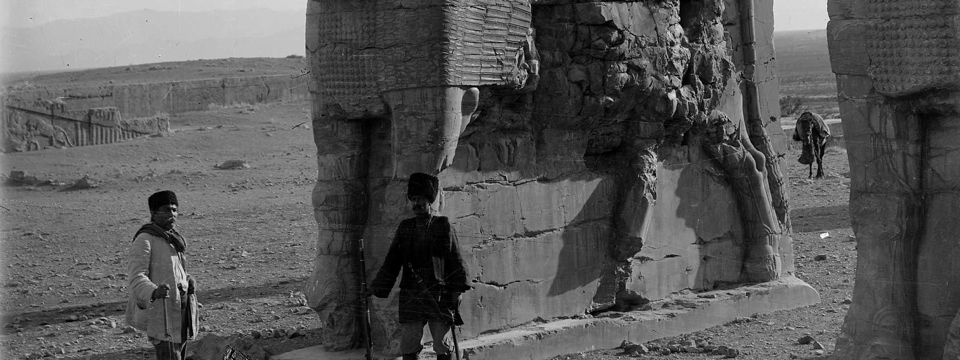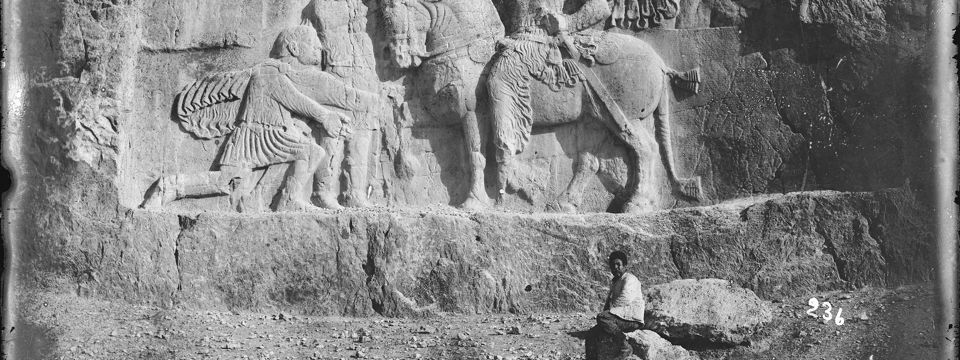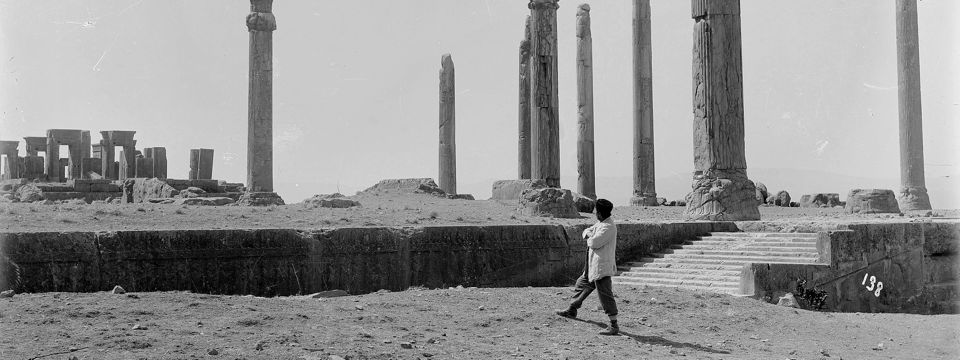Sevruguin Resource Gateway
ANTOIN SEVRUGUIN
Antoin Sevruguin managed and operated one of the most successful commercial photography studios in Tehran, Iran, in the late 19th century. Born in the 1840s in Iran, Sevruguin’s mother returned with her children to her hometown of Tbilisi, Georgia, after his father Vassil, a Russian diplomat in Iran, died in a horse-riding accident. Trained as a painter, Sevruguin returned to Iran in the early 1870s accompanied by his two brothers, establishing a photography studio first in Tabriz and then Tehran. His studio’s ties to Tbilisi, however, persisted through the years; many of the early portraits of dervishes and women have been simultaneously attributed to Antoin Sevruguin and Dimitri Yermakov, the Georgian photographer who is often referred to as Sevruguin’s mentor from Tbilisi.
Many of Antoin Sevruguin’s photographs were published as early as 1885 in travelogues, journals, and books, indicating that by that time he had a fully established practice on Tehran’s Ala al-Dawla Street, with ties to the court of Nasir al-Din Shah Qajar. Often unacknowledged as the producer of published images in his own time—the 1902 photographic survey of Persepolis being the most glaring of such authorial misrepresentations—he was nevertheless celebrated and acknowledged for his artistic vision and his keen eye for composition, earning the Medal of Lion and Sun from Nasir al-Din Shah, the 1897 Medal of Hono r in the Brussels International Exposition, and the 1900 Medal of Honor in the Paris International Exposition.
Reflecting a career that spans nearly half a century, Sevruguin’s diverse body of work includes studio portraits of families, women, and dervishes ; survey photographs of archaeological sites, objects, landscapes, and architecture; and photographs of royalty, high officials, and ceremonies of the Qajar court. The range of his output not only demonstrates his own pictorial concerns and artistic abilities, but also the divergent interests of his clients. Despite numerous devastating incidents throughout his career — the loss of more than half of his negatives in a 1908 blast and fire, an unsuccessful attempt at diversifying into cinematography in the 1910s, and the confiscation of the remainder of his negatives in the mid-1920s, to name a few— his studio remained operational even after his death in 1933. A number of negatives from the Sevruguin studio can be dated to the years after Antoin’s death, indicating that the studio continued to be commercially viable. As one of the most prolific early commercial photographers in Iran, Antoin Sevruguin’s artistic legacy has since proved far more enduring. [Shabnam Rahimi-Golkhandan, F |S curatorial research specialist]
ANTOIN SEVRUGUIN PHOTOGRAPHS IN F/S ARCHIVES
Myron Bement Smith Collection, Subseries 2.12: Antoin Sevruguin Photographs
- See collection record
- 695 glass plate negatives, purchased in 1951-1952 from the American Presbyterian Mission in Tehran (Iran)
- 98 gelatin silver photoprints, collected by Myron B. Smith in 1934 in Tehran (Iran)
- 66 gelatin silver photoprints, purchased by Joseph Upton in 1928 in Tehran (Iran)
Jay Bisno Collection of Sevruguin Photographs
- See collection record
- 18 albumen prints, purchased by Jay Bisno in 1969 in the Old City of Jerusalem
Stephen Arpee Collection of Sevruguin Photographs
- See collection record
- 1 photograph album including 99 albumen prints, donated by Stephen Arpee
- 62 albumen prints, found loose at the back of the album, donated by Stephen Arpee
Ernst Herzfeld Papers, Series 4: Photographic Files
Individually Acquired Photographs
Correspondence and Notes
- Letter from Mrs. Merrick, October 3, 1936
- Letter to Mrs. Merrick, January 26, 1937
- Letter from Mrs. Merrick, March 11, 1937
- Committee for Islamic Culture: Minutes of Fourth Meeting, September 15, 1951
- Committee for Islamic Culture: Minutes of Fifth Meeting, November 17, 1952
- Committee for Islamic Culture: Minutes of Sixth Meeting, October 24, 1953
- Myron Bement Smith's Handwritten List of 696 Sevruguin Glass Plate Negatives
- Joseph Upton's Handwritten List of 66 Sevruguin Gelatin Silver Prints
- 266 Handwritten Identifications of Sevruguin Glass Negatives, on Slips of Paper, 1943–1944
Using the Collections
- Archives Home
- Archives Collection Highlights
- Archives Collection Descriptions
- Doing Archives Research
Sevruguin Resources
Smith Records
Upton Records
Bisno Records
Arpee Records
Herzfeld Records
Miscellaneous Records
Iran in Photographs



